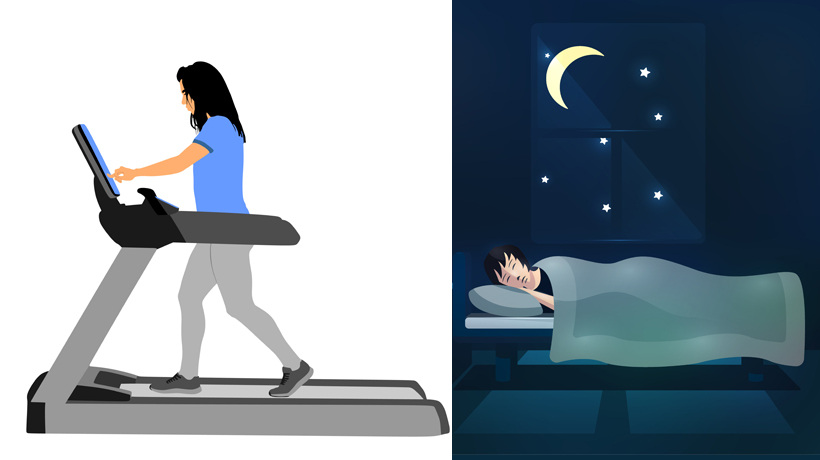Staring at the ceiling nearly all night and groggily shuffling through the next morning can be a frustrating routine for an insomniac. Even when you practice the best sleep hygiene by putting your phone away and avoiding caffeine, some people still struggle with mostly sleepless nights.
Instead of the nightly habits an hour before bed, an insomniac might actually find relief by making changes earlier in the day. According to Johns Hopkins Medicine, exercise increases the amount of slow wave sleep. Slow wave sleep refers to deep sleep, where the brain and body have a chance to rejuvenate. Exercise can also help to ease your mood and relax the mind.
Exactly what time of day one should exercise is up for debate. The National Sleep Foundation advises against working out in the late evening because the stimulating boost in body temperature might interfere with falling asleep. Furthermore, people generally sleep better when they don’t feel too warm, according to WebMD. However, Johns Hopkins Medicine says some people don’t notice any difference in their sleep if they exercise immediately before bed.
Researchers say that while we may not know when the best time to exercise is if we want better sleep, we do have a good understanding of which exercises can help us catch some Zzzs. Before beginning any new exercise routine, talk to your doctor about which activities work best for you.
Outdoor cardio
Researchers for a study published in the journal Mental Health and Physical Activity tracked activity in more than 3,000 men and women, ages 18-85, for seven days and then surveyed their sleep changes. Researchers found that 150 minutes of moderate to vigorous activity a week, which is the national guideline, provided a 65 percent improvement in sleep quality. People also said they felt less sleepy during the day, compared to those with less physical activity.
Cardiovascular exercise, including running, brisk walking, cycling, and swimming, can help regulate sleep cycles. Plus, sun exposure when you wake up can help with your sleep/wake cycle, making you feel more awake during the day (and sleepier at night). The National Sleep Foundation says that doing activity outside in the morning – like a morning walk around the neighborhood – can reset your circadian clock.
Strength training
A study in the Journal of Strength and Conditioning Research asked its college-aged participants to do strength-based workouts at a moderate intensity at various times of the day. The students also wore sleep trackers to bed. Researchers found that lifting weights in the morning helped subjects fall asleep about 45 minutes faster. Lifting weights in the evening improved the actual quality of sleep.
The National Sleep Foundation says building muscle can improve the quality of sleep and help people wake up less frequently throughout the night. Strength training can include exercises like bicep curls, squats, calf raises, push-ups, planks, and more.
Yoga
While experts generally recommend moderate intensity cardio and weightlifting, a gentler approach can also positively impact sleep. A 2017 national survey conducted by the U.S. Department of Health and Human Services found 55% of people who performed yoga had better sleep, and 85% reported less stress. Harvard Health Publishing says stress can negatively affect sleep, so relieving it may make falling asleep easier.
Sources:
https://www.hopkinsmedicine.org/health/wellness-and-prevention/exercising-for-better-sleep
https://www.sleepfoundation.org/articles/best-exercises-sleep
https://www.webmd.com/sleep-disorders/features/cant-sleep-adjust-the-temperature#2
https://www.webmd.com/sleep-disorders/features/can-exercising-at-night-hurt-your-sleep#1
https://www.sleep.org/articles/exercise-time-of-day/
https://www.sciencedirect.com/science/article/abs/pii/S1755296611000317
https://www.sleep.org/articles/circadian-rhythm-body-clock/
https://journals.lww.com/nsca-jscr/Fulltext/2015/05000/Effects_of_Resistance_Exercise_Timing_on_Sleep.28.aspx
https://www.health.harvard.edu/blog/8753-201512048753
https://nccih.nih.gov/research/statistics/NHIS/2012/wellness?nav=chat



